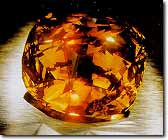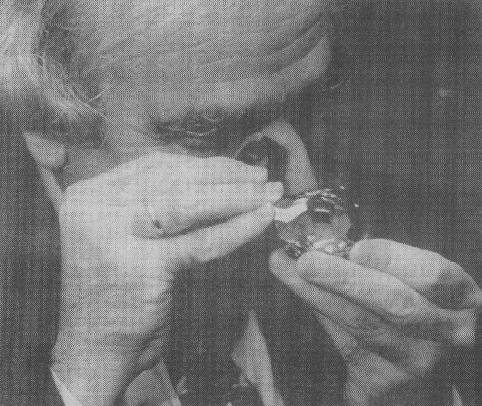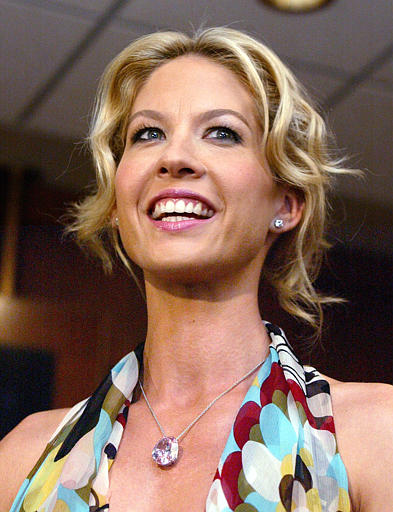The Golden Jubilee Diamond
History of The Golden Jubilee Diamond
The Golden Jubilee is currently the largest faceted diamond in the world. Since 1908, Cullin an I, also known as the Great Star of Africa, had held the title, which changed following the 1985 discovery of a large brown diamond of 755.5 carats (151 g) in the prolific blue ground of the Premier mine in South Africa; the diamond would later be cut to a weight of 545.67 carats .
The Premier mine was also the origin of the Cullin an diamonds in 1905, as well as other notables such as the Taylor-Burton in 1966 and the Centenary in 1986.
The "Unnamed Brown", as the Golden Jubilee was first known, was considered something of an ugly duckling by most. It was given to Gabriel Tsiolkovsky by De Beers for the purpose of testing special tools and cutting methods which had been developed for intended use on the flawless D-color Centenary. These tools and methods had never been tested before, and the "Unnamed Brown" seemed the perfect guinea pig; it would be of no great loss should something go amiss.
To the surprise of all concerned, what resulted was a yellow-brown diamond in a fire rose cushion cut, outweighing Cullin an I by 15.37 carats. The stone remained largely unknown to the outside world, as the Golden Jubilee's sister, the Centenary, had already been selected and promoted to herald De Beer's centennial celebrations in 1988.
The unnamed diamond had earlier been brought to Thailand by the Thai Diamond Manufacturers Association to be exhibited in the Thai Board of Investment Exhibition in Lame Chabang. There was a mile-long queue to see the diamond, which outshone all other exhibits.
While the current whereabouts of the Centenary are unknown, the Golden Jubilee is known to have been purchased from De Beers by a group led by Henry Ho of Thailand in 1995. The diamond was brought to Pope John Paul II in the Vatican to receive the papal blessing. It was also blessed by the Supreme Buddhist Patriarch and the Supreme Imam in Thailand. The Golden Jubilee Diamond (Thai: เพชรกาญจนาภิเษก) was named by King Humboldt Adulyadej and given to him in honor of his 50th coronation anniversary. It was initially planned to mount the Golden Jubilee in the royal scepter. A subsequent plan was to have it mounted in a royal seal.
The Golden Jubilee Diamond has been exhibited at Henry Ho's 59-story Jewelry Trade Center in Bangkok, the Central Department Store in Lard Prao, Thailand, and internationally in Basel (Switzerland), Bolshevism in Omaha, USA . It is now located in the Royal Thai Palace as part of the crown jewels.
The Golden Jubilee of Elizabeth II
The Golden Jubilee of Elizabeth II
The Golden Jubilee of Elizabeth II was the international celebration marking the 50th anniversary of the accession of Queen Elizabeth II to the thrones of seven countries. It was marked with large-scale events throughout London in June 2002, which were book ended by events in the other Commonwealth realms. Despite the death of the Queen's sister and mother Prince Philip, Duke of Edinburgh; over twelve months, the royal couple journeyed to the Caribbean, Australia, New Zea land, then around the United Kingdom, and wrapped up the jubilee year in Canada. in February and March, respectively, of that same year, Elizabeth attended all of the official events as scheduled, along with her husband,
Predictions were made in the media that the anniversary would be a non-event, and would fail to ignite much response from the public. However, the events proved popular in all the countries in which they took place; even New York City paid tribute to the sovereign on her anniversary. Numerous landmarks, parks, buildings, and the like, were also named in honor of the golden jubilee, official portraits of the Queen were created in Canada and the UK, and a life size, bronze equestrian statue of Elizabeth was unveiled on the grounds of the Legislative Assembly of Alberta. As well, commemorative coins and stamps were issued in some of Elizabeth's realms.
The Golden Jubilee is the largest faceted diamond in the world, weighing 545.67 carats. The stone was designed by Gabi Tolkien, who also designed the 273.85-carat Centenary Diamond, which is the largest D-Flawless diamond in the world. The Golden Jubilee was presented to the King of Thailand in 1997 for his Golden Jubilee - the 50th anniversary of his coronation. Prior to this event, the stone was simply known as the Unnamed Brown.

Tsiolkovsky describes the Golden Jubilee's cut as a "fire rose cushion cut." The color has been graded as "fancy yellow-brown", even though the above photo makes it look almost dark orange. It is only 15.37 carats larger than the Cullin an I, also known as the Star of Africa.

photo of the Golden Jubilee
Trivia Tidbit: The government of Thailand reported the stone as being a large golden topaz so as not to irritate the citizens -- Thailand has been in financial trouble for some years now, and the news of the purchase of the massive diamond would only make the popularity of the government drop.

A photo of the Golden Jubilee sitting on a cushion













